THE REAL JAPAN GREEN LIGHT
Illuminating ideas bringing the UN’s Sustainable Development Goals to life
Welcome to issue eight of Unlock the Real Japan , a special collaboration between Nikkei Inc. and Time Out Tokyo created to help business leaders gain new insight into one of the most exciting countries on Earth.
In Unlock you’ll find Nikkei Asia ’s renowned insight into the business world combined with Time Out Tokyo ’s knowledge of contemporary life in Japan, ensuring that visiting executives can experience all sides of life in the country.
This issue looks at the Sustainable Development Goals (SDGs), urgent calls for action issued by the UN with a target of completing them by 2030. With seven years to go there is work to do, and in this issue we highlight Japan’s approach to doing so. Some of the ideas we’ve featured, such as the sustainable approach at Ise Grand Shrine (p4), have been centuries in the making. Others, including Taku Yamada’s plans to reimagine tourism (p14) are much newer. All are essential if we are to achieve the kind of world we want to live in.


We hope you enjoy the issue.
Planned, produced and distributed by Nikkei Inc. Global Business

Edited by Matthew Lee (Time Out Tokyo)
Rob Orchard (Time Out Tokyo)
Marcus Webb (Time Out Tokyo)

Designed by James Ladbury
Coordinated by Ili Saarinen (Time Out Tokyo/ORIGINAL Inc.)
Directed by Akiko Toya (Time Out Tokyo/ORIGINAL Inc.)
Nikkei Inc.
1-3-7 Otemachi, Chiyoda-ku, Tokyo 100-8066 +81 (0)3 3270 0251| nikkei.com
Advertising and general enquiries: global.inquiry@nex.nikkei.co.jp
All rights reserved. Using the content for commercial purpose, citing, reproducing, editing, summarizing or translating the contents without prior permission of Nikkei Inc. is strictly prohibited.
The United Nations 2023 SDG Summit in New York this September is a crucial gathering. It will mark the half-way point on the path to achieving the UN’s Sustainable Development Goals by their 2030 deadline and decision-makers, thought leaders, and activists around the world will be exploring a wide range of ideas that could help bring about a greener, fairer, and more liveable world.
High on the list of promising approaches is the concept of a circular economy and society: a world in which waste is minimized by enabling natural cycles of renewal and regeneration. In a circular approach, recycling and reusing is elevated from individual action to a guiding principle of all social and economic activity.
The philosophy of using only what’s necessary, eliminating waste, and respecting natural cycles is distinctly
A VIRTUOUS circle
Masashi Takahashi visits Ise Grand Shrine to explore how the UN’s goal for sustainable communities aligns with Shinto philosophy and Japanese tradition
l Approximately eight million people come to Ise Grand Shrine every year to worship or as tourists

familiar to many Japanese people. Cyclicality has been a central tenet of Shintoism, Japan’s native religion, since distant antiquity and continues to inform many aspects of the country’s society and spirituality today.
What can we in the twenty-first century learn from Japan’s traditional understanding of sustainability? To find out, Unlock visited Ise Grand Shrine, one of the holiest sites in Shinto, where the idea of natural cycles underpins a remarkable tradition of renewal practiced for more than a thousand years.
Rebuilding to endure
Ise Grand Shrine in coastal Mie Prefecture occupies a sprawling woodland complex centered on two main sanctuaries, the Outer and the Inner Shrine. Hidden within a sacred forest, the latter enshrines the sun deity Amaterasu Omikami and is the most important place of worship dedicated to this preeminent Shinto figure. Popular to this day among pilgrims and tourists alike, Ise was once Japan’s biggest draw: some estimates have it that ten percent of the country’s population visited the shrine during the Edo period (1603–1867).
By all accounts, the shrine’s wooden, thatched-roof buildings look almost exactly as they did when first erected back in the seventh century. But this longevity is not due to some remarkable stroke of luck, nor the result of tenacious preservation efforts. Ise Grand Shrine’s structures have survived in their original form because they aren’t, strictly speaking, original at all.
The shrine’s key halls, along with the iconic Ujibashi Bridge at the entrance to the Inner Shrine, are completely rebuilt every twenty years in a tradition dating back 1,300 years. Known as shikinen sengu (“periodic transfer of a deity”), the practice is indicative of the Shinto concept of tokowaka or “eternal youth,” which emphasizes constant renewal in pursuit of eternity. “Tokowaka is all about circulation, about returning to the starting point,” explains Satoru Otowa, Ise Grand Shrine’s vice head of public relations. “Two decades is the natural lifespan of a thatched roof, and by extension that of a building.”
Twenty years is also the time it takes for a new generation to grow up. The shikinen sengu process sees Ise Grand Shrine rebuilt with the same construction
techniques used throughout its history— skills that would surely have been lost to time without a regular opportunity to practice them. “Doing the same thing over and over is also for the purpose of passing these traditions down through generations,” explains Otowa.

While dismantling and rebuilding structures that have stood for only two decades may seem wasteful, shikinen sengu is anything but. Timber and other materials from the old buildings are donated to other Shinto shrines
Living on nature’s terms
The renewal of the forest is not the only way in which Ise is practicing sustainability and adapting to its environment. “Shrines have always been built to be resilient, especially against natural disasters,” says Otowa. “That starts with choosing places that are relatively safe from earthquakes and floods, that can serve as refuges in times of disaster.”
For example, many of Japan’s oldest Shinto sites of worship, including Ise Grand Shrine, occupy slightly elevated land between two rivers, some distance upstream from where the waterways intersect. “Ancient people understood how rivers tend to flood,” says Otowa, “so they established their shrines where they knew the waters wouldn’t reach.”
In addition to being remarkably well protected from natural hazards, Ise enjoys the blessings of both inland and marine ecosystems. The rivers flowing through the shrine grounds carry nutrients from the surrounding mountains into Ise Bay nearby, nourishing its rich marine environment. “I think the interplay of the forest, rivers, and the sea is another reason why this place is so special,” says Otowa.
Japan and reused in the construction of new halls of worship.
The Shinto priests of Ise also plant new trees regularly and manage their forest in an environmentally friendly way to secure a sufficient supply of wood for future reconstructions. The shrine’s forestry efforts aim to reverse the damage done to Ise’s sacred woods in the late nineteenth century, when many trees were cut down for firewood. “In the future, we hope to again source all the timber [required to rebuild the shrine] from the surrounding forest,” says Otowa.
Ise Bay is also where many of the shrine’s food offerings, made to the deities twice every day, come from. “Most of the produce we use [in rituals] is sourced locally and only the amounts necessary for offerings are taken,” explains Otowa. “[After rituals] the daily offerings are considered gifts from the deities and consumed within the shrine, so no food is wasted.” Relatedly, Ise Grand Shrine’s tradition of offering preserved foods such as dried fish may have been born out of necessity centuries before refrigerators were invented, but ended up playing a part both in minimizing food loss and in the development of Japan’s now famed culinary culture.
These practices all stem from the conviction that to endure, we have to learn to live on nature’s terms. As Satoru Otowa says, “nature is the foundation for community. In Japan, the [Shinto] shrine has traditionally been a community focal point, where children play and people gather for celebrations.” To overcome the worsening climate crisis and achieve the Sustainable Development Goals, perhaps more communities around the world could look to Japan’s past to preserve all our futures.
Shrines have always been built to be resilient, especially against natural disasters throughout
ALL better
The Japanese-led GHIT Fund is making a global difference with its support for life-saving drug development.
CEO Osamu Kunii tells Ili Saarinen why tropical diseases still kill millions around the world and how his organization is working to achieve good health and wellbeing

Societies worldwide breathed a collective sigh of relief late this spring, when the World Health Organization declared an end to Covid-19 as a global health emergency. While the pandemic may have appeared a rare and shocking event to the vast majority of people in affluent countries, gripped by the illusion that life-threatening infectious diseases were a thing of the past, in developing countries Covid struck a familiar, deadly chord.
Ailments including malaria, tuberculosis, and NTDs, or neglected tropical diseases—a group of infections that mainly affect impoverished populations in the global south—kill over two million people annually. This toll is roughly equal to the reported number of annual deaths globally from Covid-19 during the pandemic, but while tens of billions of dollars were expended to develop Covid vaccines and treatments in record time, a chronic lack of funding hampers the development of cures for the diseases decimating poorer countries.
“Such medicines [would never see the light of day] if the decision were left up to market forces,” says Dr. Osamu Kunii, CEO of the Global Health Innovative Technology (GHIT) Fund. Pharmaceutical companies can hardly expect to profit from drugs needed by some of the world’s most poverty-stricken people and therefore won’t invest to develop them. That’s where a differencemaking role can be played by actors such
as the GHIT Fund, a Japan-headquartered global public-private partnership backed by the Japanese government together with the Bill & Melinda Gates Foundation, the UK’s Wellcome, the UN Development Programme, and many of the world’s leading pharma firms.
The fund was established in 2013, in part to protect and make effective use of Japan’s valuable knowhow and experience in developing diagnostics, drugs, and vaccines for infectious diseases, and over
the past decade has invested some ¥30 billion into fighting illnesses afflicting the world’s poor. “We join together academia, firms, and governments around the world [to develop treatments, vaccines, and diagnostics], and partner with people in developing countries to conduct clinical trials and promote new treatments,” says Kunii, a public health specialist with more than 30 years of experience ranging from working with emergency medical response to natural disasters and conflicts in the developing world to leadership roles at Unicef and the Swiss-based Global Fund.
A medical breakthrough
After a decade of “planting seeds and cultivating them,” as Kunii puts it, in the form of supporting more than 100 research and development projects, the GHIT Fund is on the brink of a breakthrough: the first product it has helped develop could soon receive regulatory approval. The European Medicines Agency may shortly issue a decision that would clear the way for clinical use of a potential new drug for treating schistosomiasis in children.
That disease, transmitted through water by parasites that multiply inside aquatic snails, affects the intestines and urinary tract and is known to have been prevalent since antiquity in communities without access to clean water. An effective drug for adult patients exists, but treating young children is difficult even today, and schistosomiasis remains responsible for some 200,000 deaths every year.
“If approved, this potential pediatric treatment option could be used to treat more than 50 million children around the world,” says Kunii.
While successfully developing one difference-making drug in ten years is considered a great achievement in the world of pharmaceutics, the GHIT Fund is not about to take its foot off the gas.
“We have 12 other projects in the clinical trial stage,” says Kunii, “and in our next five-year strategy we’ll seek to speed up the [product] development process even further to maximize impact with the limited resources at our disposal, in order to save the lives of vulnerable people in need.” And with the Japanese government having pledged another $200 million in funding over the next five years, the GHIT Fund’s battle against overlooked diseases could soon yield more invaluable results.


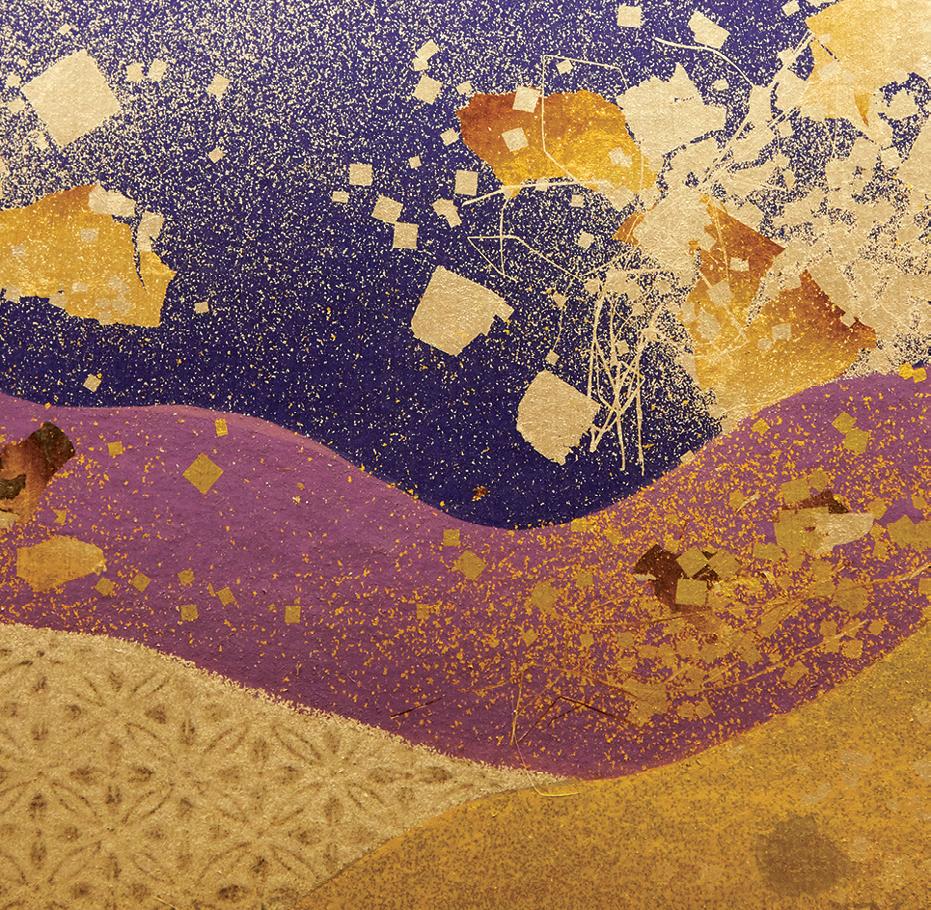



Mori no Kusurijuku (“The Medicine School in the Forest”) stands in the foothills of the Nagano Prefecture city of Ueda, next to the historic Shioda Minakami Shrine. This extraordinary pharmacy was established in 2016 by Yasushi Ogawa, Japan’s only Amchi, a doctor specializing in Tibetan medicine.
Tibetan medicine is known as one of the four major branches of Eastern medicine along with Chinese, Indian, and Islamic traditional remedies, and medicinal herbs are at the core of its therapeutic methods. Amchi doctors themselves climb the steep mountains of the Himalayas, harvesting medicinal herbs. They then examine patients by evaluating their pulse and urine, and prescribe medicines from a selection of up to 200 kinds of pills made from herbs.
A graduate of Tohoku University’s Faculty of Pharmaceutical Sciences and a licensed pharmacist, Dr. Ogawa’s first encounter with Tibetan medicine came when he randomly picked up a book on the subject at a store. In 1999, his growing interest in the practice led him to Dharamsala, India, where the Tibetan government-in-exile is based. Two years later, at the age of 31, he became the first non-Tibetan to be admitted to the MenTsee-Khang, the Tibetan Medical and Astronomical Institute, where he studied for six years and qualified as an amchi.
A culture of compassion
A licensed pharmacist who is also well versed in herbal medicines, Ogawa’s unique pharmacy draws a wide variety of customers from across the country. No matter who he’s serving, Ogawa emphasizes an ethos of “caring and sharing”—paying attention to others’ needs while sharing knowledge, experiences, and feelings.

THE NATURAL solution
The Tibetan society I was part of had a very strong sense of caring and sharingl Yasushi Ogawa was the first non-Tibetan to be admitted to the Tibetan Medical and Astronomical Institute
“In Japan, people used to wrap mugwort around burns,” Ogawa says. “Whether that really helps or not, I think it’s based on the desire to care and share when someone isn’t feeling well. People who receive treatment of any kind feel relieved. That’s a feature of medicine in Japan that hasn’t changed with the times.”
This spirit of mutual aid is not limited to Japan. “The Tibetan society I was part of had a very strong sense of caring and sharing,” says Ogawa. “Tibetans are an ethnic minority, so by necessity they help each other to survive.”
Ogawa experienced this first hand during his student days at the Men-Tsee-Khang. When a fellow student was struggling during a test, those around him would secretly help him. On one occasion, a teacher saw Ogawa writing down the wrong answer on an exam and told him, “Hey, you’re wrong here.”

Cheating, or an admirable attitude of not abandoning those in need? There’s an important social context to consider— Tibetans in Dharamsala, where the Men-Tsee-Khang is located, are refugees. And nowadays, many cancer patients visit Tibetan doctors in search of this culture of compassion. “There’s no hard evidence that Tibetan medicine works against cancer,” says Ogawa. “But the local amchi accept patients and do the best they
can. They don’t hesitate to reach out to those who need help. I believe that these patients are there precisely to receive careand-share treatment, which is different from modern medicine.”
There exists a similar culture of caring and sharing in rural Japan. When Ogawa goes to give lectures in such areas, he often hears people say things like, “In the old days there were no medicines, so people would consume a brew of dried earthworms when they had a fever.” Surprisingly, antipyretic medicines made from earthworms (diryu) are still sold over the counter in Japan. “Until 1961, when Japan’s universal health care system was established and the mass production of medicines allowed for stable supply, medicines were a scarce commodity,” says Ogawa. “So people had to depend on things like worms. I take over-the-counter medicines [made from worms] myself, and they work very well.”
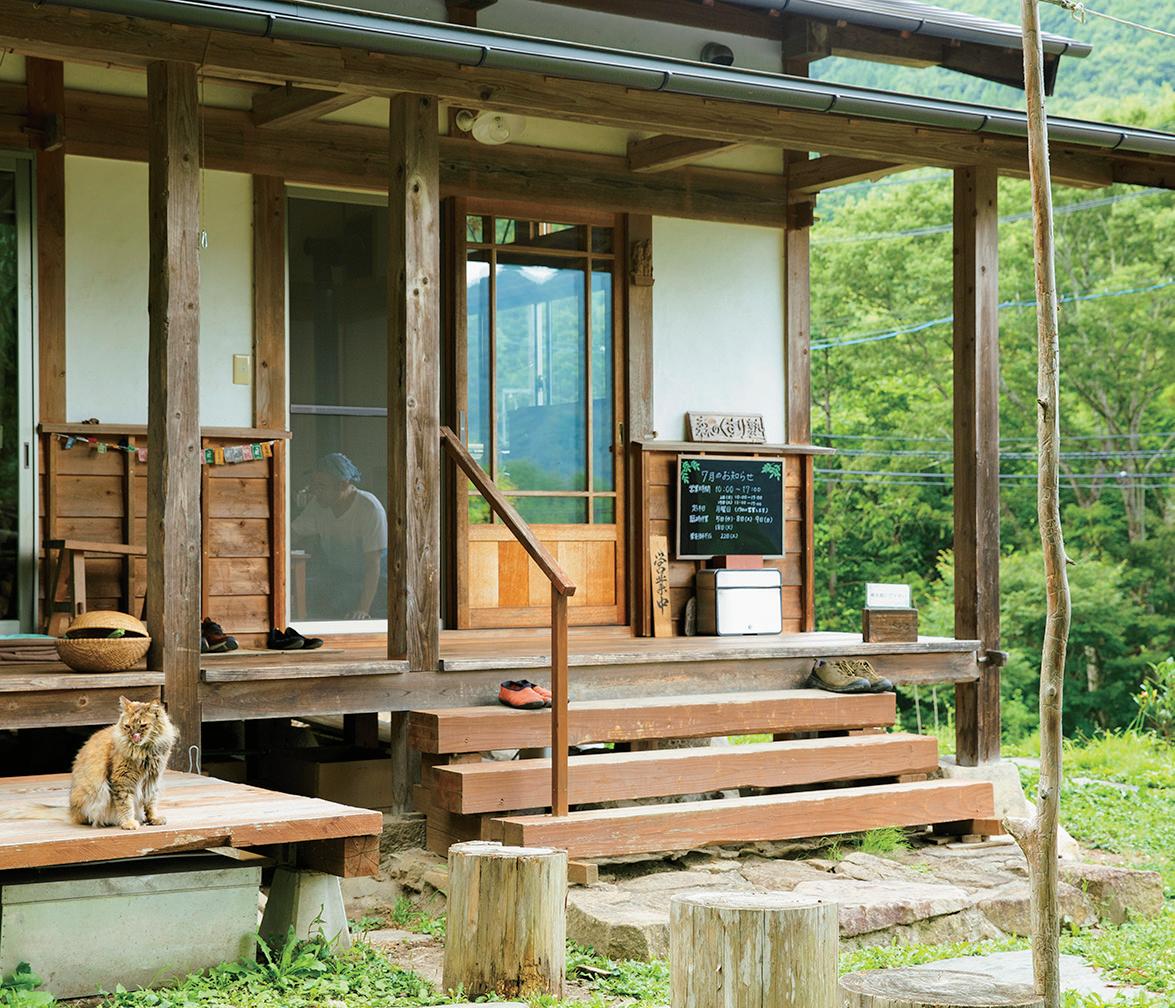

This ancient culture of caring and sharing, which has since evolved in order to maintain social relationships amid economic development, may help explain Japan’s high life expectancy. Ogawa notes how social epidemiologist Ichiro Kawachi, currently a professor at the Harvard T.H. Chan School of Public Health, argues in his writings that the traditional lifestyle
and local community ties in “a close-knit society with little inequality” is the reason for Japanese longevity.
The long game
Although everyone in Japan has access to the benefits of modern health care, more and more medical professionals and people concerned about their health are visiting Ogawa for advice. Perhaps they are drawn to the kind of traditional characteristics of Japanese society praised by Kawachi, which appear to be under threat as rural areas suffer from the declining birthrate and the aging population.
The day before our interview, a person with diabetes came to the pharmacy and left two hours later with a smile on his face. Although medicines containing herbs selected by Ogawa are sold at the pharmacy, all he did on this occasion was simply to listen carefully to the patient’s concerns and share his observations.
“I don’t belong to any institution,” Ogawa says. “I think that’s why people come here for frank opinions. I hope to continue to be a place of refuge, independent of authority and power.”
With the average lifespan in Japan expected to keep increasing, discussions are turning toward “health expectancy”— not merely longevity, but the ability to live a full and healthy life for as long as possible. When considering the future of health expectancy, there may be some clues to be found in the efforts of Japan’s lone amchi.


AN EQUAL chance
How can Japan achieve the UN sustainable goal of reduced inequalities? Yukiko Ozaki, Chief Human Resources Officer at Nomura Holdings, has a plan. Interview: Risa Shoji
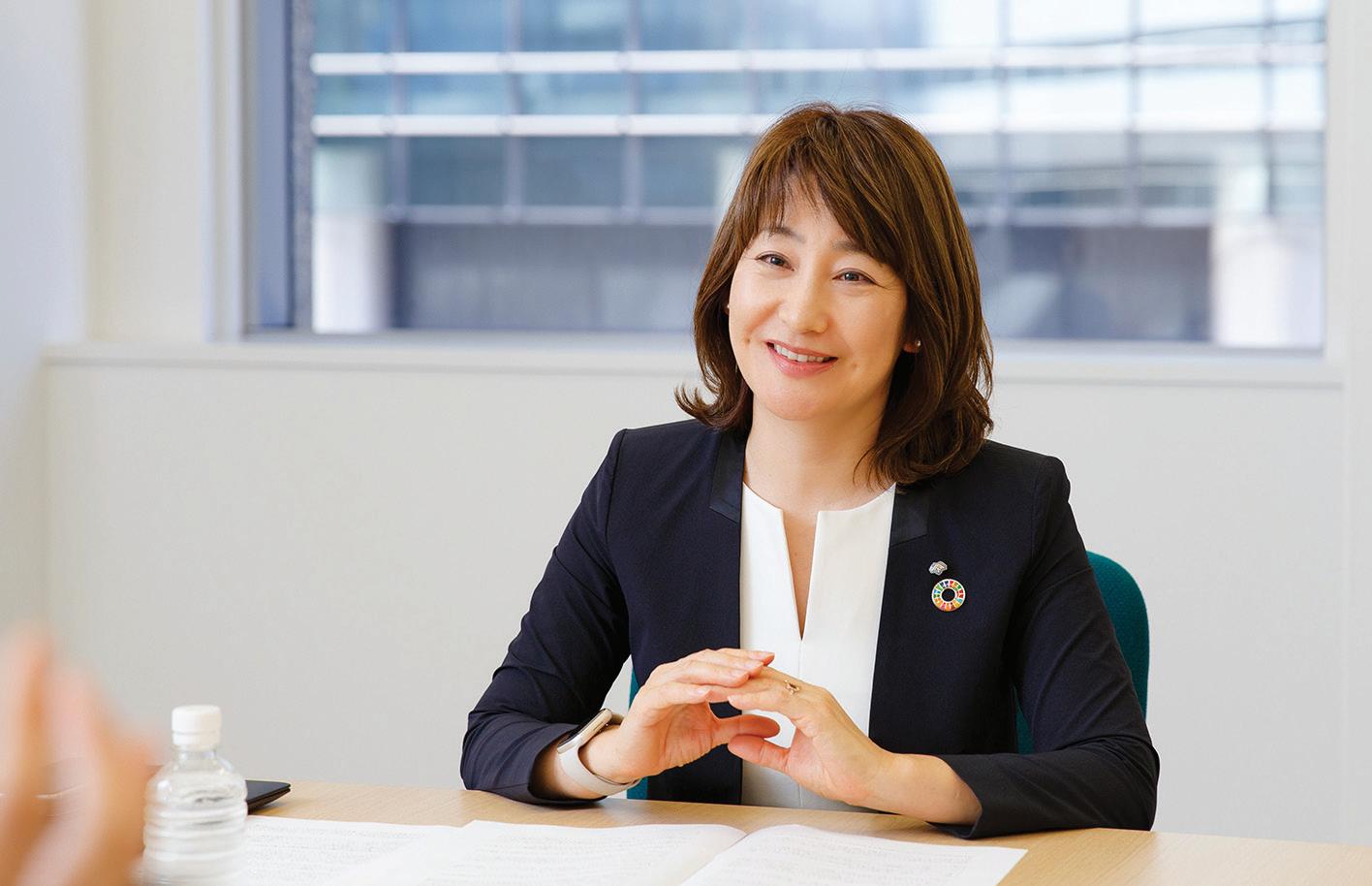
also helped show existing managers the benefits of diversity. “We need to be enlightening the bosses,” she says. “Communications and support should reach all employees, senior and junior.”
Getting even
As for gender equity, Nomura has set itself a target of increasing the number of women in management positions from 15% to 20% by 2025. Ozaki believes the goal is achievable but won’t be easy. “The number of women who say they want to be managers is overwhelmingly smaller than that of men,” she says. “You hear many women say things like, ‘It’s too much for me’ or ‘I can’t do this kind of role’.” To promote change, Nomura has implemented training sessions to lower such self-imposed barriers among women and build confidence. “We’re working to change the mindset of female employees. For example, mentors can show younger women how they’ve been able to balance work and family,” says Ozaki, who is keen to stress that male colleagues play important roles as well. According to figures from the Ministry of Health, Labour and Welfare, just 14% of eligible men in Japan took childcare leave in 2021 compared to 85% of women. “We’re actively encouraging our employees to take paternity leave,” says Ozaki. “We aim to have 90 percent of both male and female employees take parental leave.”
When it comes to diversity in business, Japan has some work to do. The country ranked 116th out of 146 countries in the World Economic Forum’s 2022 Global Gender Gap report and women represented only 11% of executives in Japan’s major listed companies last year. There are few openly gay executives in major companies and same-sex marriage remains unrecognized legally, excluding LGBTQ couples from many companies’ family benefit schemes.
In April Japan’s prime minister, Fumio Kishida, said that diversity in listed companies is key to “enabling innovation” and “achieving ‘new capitalism’ and an inclusive society.” But how do you
change the mindset of a people? Yukiko Ozaki, Chief Human Resources Officer at Nomura Holdings, has spent her career promoting diversity in the workplace. “Nomura is a Japanese company, but we have been globalizing our operations fairly quickly,” she says. To achieve further global growth, Ozaki wants “an organization where all kinds of people can play an active role… where there’s an attitude of accepting differences.”
To encourage diversity throughout the company, three new networks have emerged within Nomura: “Allies,” “Women in Nomura,” and “Life & Family.” Each runs several programs aimed at supporting minorities in the workplace and promoting allyship among employees. Ozaki believes that these networks have
The company’s LGBTQ program has a long history and is equally significant to Ozaki. “I have been involved in LGBTQ programs from when I was with Lehman Brothers,” she says. “I see the existence of Allies as very important in terms of creating a safe environment.” Nomura provides spousal benefits to LGBTQ couples and applications can be completed privately. “We are putting a lot of effort into fostering allyship,” she says. “Having an accepting environment and respecting privacy is really encouraging to our employees who aren’t part of the majority.”
Ozaki believes that if Japan is to achieve a more diverse future, established companies need to lead the way. “Companies should go about creating environments in which it’s considered OK to be yourself,” she says. “When big companies commit to do that things change, because they are influential. People will think, ‘If Nomura can do it, so can we.’ It’s all about maximizing everyone’s potential.”
Traditional festivals or matsuri are an essential part of a Japanese summer. One of the country’s oldest seasonal celebrations is the Gion Matsuri in the ancient capital of Kyoto, first held way back in 869. Famed for its brilliantly decorative floats, traditional costumes, and mouthwatering street food, the resplendent event is now working to sustain itself for the next 1,000 years by becoming more eco-friendly.
The Gion Matsuri is held throughout July in central Kyoto and at the Yasaka shrine, with hundreds of festival stalls lined up around the Shijo Karasuma area during the famous float parades, which take place over a weekend in the middle of the month. With crowds packing the streets, the Gion Matsuri Zero Waste Association has a big job on its hands minimizing the environmental impact. “Hiring waste disposal and cleaning companies to keep the streets clean are common initiatives [at festivals across Japan],” says Kohei Ota, who heads the association. “But there haven’t been many initiatives to reduce the amount of waste itself.”
The association was established 20 years ago and has found that some of the most effective changes are counterintuitive. For example, the Gion Matsuri would set up garbage cans in 1,400 locations across the festival area, but in 2014 the Zero Waste Association suggested reducing that number to 50. “Back then, the thinking was that not having enough garbage cans would lead people to litter,” says Ota. “But no matter how much capacity you have, those cans fill up quickly. With 1,400 locations, you can’t keep an eye on them all, and some will overflow. That then led people to throw their trash on the street, so despite all the cans, the area was full of litter.”
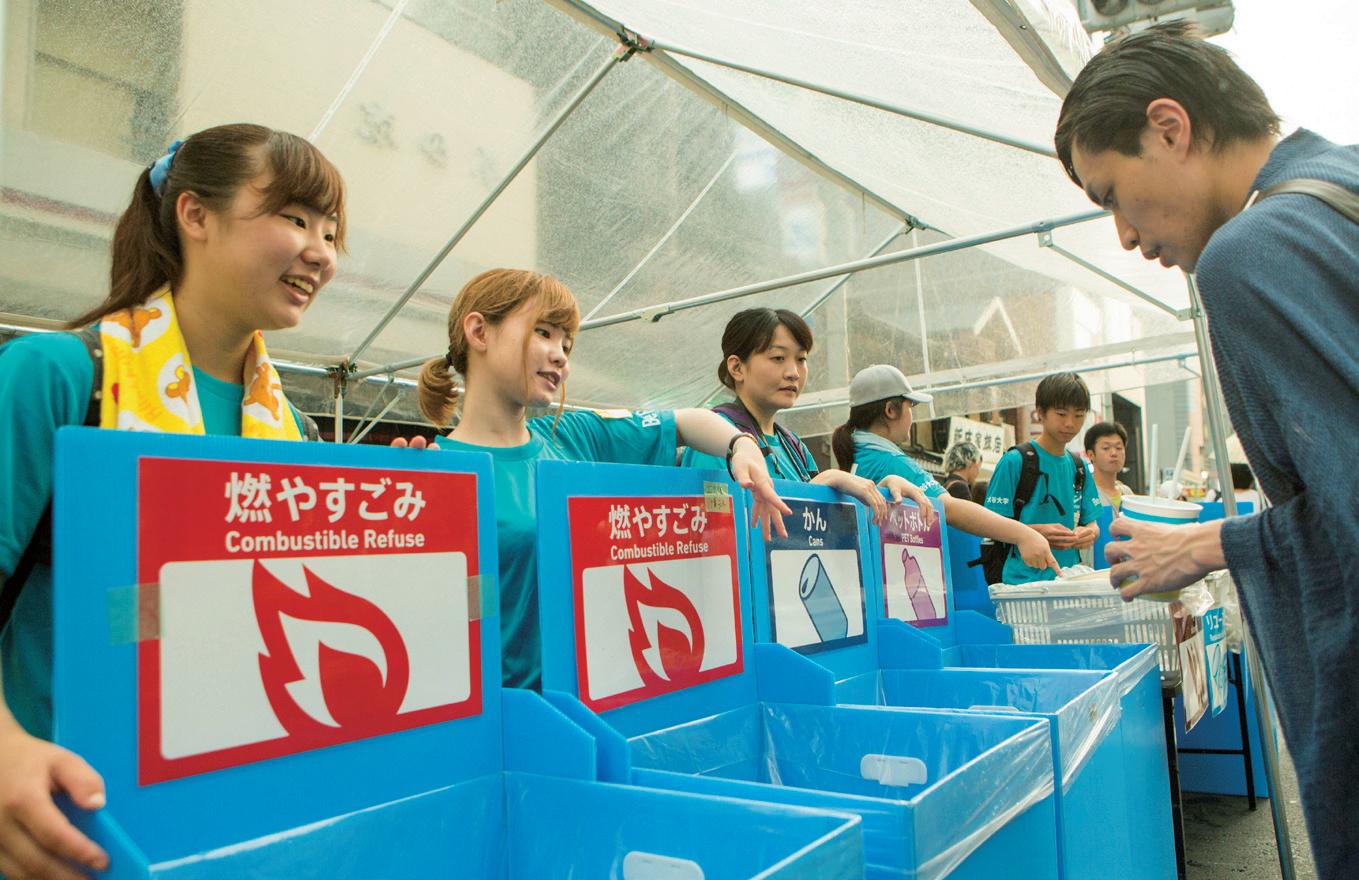
While the association reduced the number of garbage disposal sites radically, they also staffed all of them with volunteers who would help festivalgoers separate their trash. “Before the festival,
GOOD CLEAN fun
we’d plan out how crowds are likely to move to help place garbage cans in the right locations,” says Ota. “Some local people were against reducing the number of disposal sites. But in reality, having garbage cans in visible places and supervised by staff has reduced littering.”
Switching from plastic plates and cutlery to reusable alternatives is another successful initiative promoted by the association. “We’ve provided reusable tableware to the people running the food stalls and helped wash it afterwards,” explains Ota. “Festivalgoers are encouraged to return their crockery to collection sites. At this year’s Gion Matsuri, 200,000 meals were provided on reusable plates.”
The Zero Waste Association’s efforts have been inspired by eco-friendly
practices overseas, particularly in Europe. “Reusable glasses and cups have long been commonplace at German Christmas markets and the Oktoberfest, for example,” says Ota. Reusable tableware is set to become more common at major events in Japan, including the OsakaKansai Expo in 2025.
Alongside their work with the Gion Matsuri, Ota and his team now collaborate with some 400 events throughout the country annually, from music festivals to kindergarten happenings. “Over recent years, we’ve seen festival organizers become more aware of environmental issues,” says Ota, who hopes that efforts to reduce waste and reuse resources will be accelerated throughout society and in daily life. “We need everyone on board to make a difference,” he says.
How one of Japan’s oldest festivals is reducing waste and working towards responsible consumption. By Akiko Toya
Over recent years, we’ve seen festival organizers become more aware of environmental issuesl The Zero Waste Association reduced the number of bins at the Gion Matsuri festival from 1,400 to 50


TRAVEL plans
Working under the slogan “Traveling through life,” Satoyama Experience is a tourism company that started out organizing cycling tours through the Hida area in central Japan’s Gifu Prefecture and this year acquired the international Travelife Partner sustainability certification. Gifu is home to several attractions including the World Heritage-listed village of Shirakawa-go and the Nagara River Basin, selected as one of the world’s top 100 Green Destinations in 2021, but Taku Yamada, the president of Satoyama, wants tourists to do more than merely take in the sights.
Yamada is passionate about preserving the heritage of traditional townscapes and the nature that surrounds them. Putting this passion into action, in 2020 the company opened Satoyama Stay. This “dispersed hotel” doesn’t seal guests off from the community, but instead encourages them to experience the traditional way of life in Hida through immersive experiences and stays in traditional-style townhouses in the town of Furukawa. “We want visitors to feel the lifestyles of the local people as they really are,” explains Yamada, who believes that the only way to attract more tourists to places like Furukawa is to make sure that local communities are thriving.
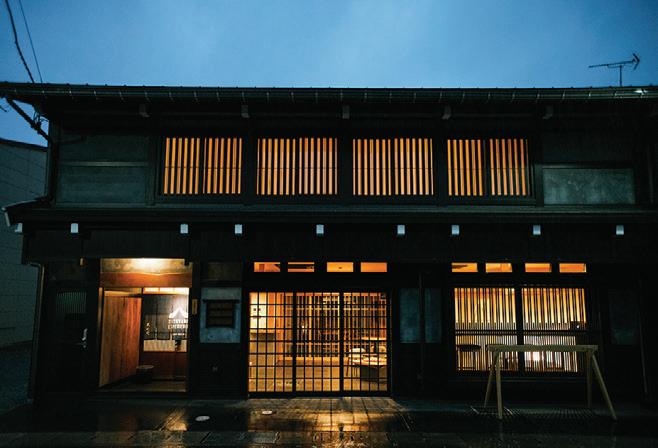
“Tourism pioneers here referred to it as ‘result tourism’,” he says. “It means that if the people in the community are living well, people will come to visit as a result. We want to guide visitors to a town where not only the streetscape remains, but the traditional lifestyle is also alive and well too. If you can’t protect people’s way of life, maybe the cityscape will remain but residents will leave, as has happened in places around Japan with streetscape preservation districts. The buildings themselves might look beautiful,

l Taku Yamada believes in integrating visitors within the local community but the sense of life is lost. I want to strike a balance between tourism and the community itself.”


Helping hands
Yamada has found that the best way to do this is to encourage tourists to be actively involved in the process. “We thought it would be good if we were to become a catalyst for people gathering in our town to actually contribute to it,” he says. They have done this by organizing projects which have seen visitors signing up to participate in everything from restoring historic houses to seasonal chores such as clearing snow from mountain tracks. Even the local fish get a helping hand. “There are carp swimming in the Seto River that runs through Furukawa,” says Yamada. “[Every winter they have to be] moved into the pond at the Masushima castle ruins [for their protection]. You have to take the carp out of the river in the fall and put them back in spring, and we decided to open this up to tourists. Although it’s hard to do it every year when you think of it as a job, as an experience
it’s something tourists enjoy, and it’s become a tradition in the town now.”
Satoyama Stay will allow its guests to contribute to such experiences while not only staying in the community, but supporting its residents. “All [the] buildings for Satoyama Stay were built from new,” says Yamada. “The reason was that we wanted to preserve local carpenters’ skills. Similarly, we used local wood because we wanted to provide a boost to the local forestry industry. We also want to create jobs for artisans [by having them craft furniture for the hotel].”
For Yamada it all comes back to the company’s raison d’être: to use tourism to build a better way of living for locals in a rural area that was suffering decline. “We want to set an example for Japanese society in the future,” he says. “Our employees aren’t here just because they want to organize tours or run an inn. They’re thinking about how they can play a role in building a sustainable society. Everyone is actively involved.”
Satoyama Stay, 11-32 Furukawacho Ninomachi, Hida, Gifu satoyama-experience.comI want to strike a balance between tourism and the community itself... to set an example for the future
Japan is one of the most disaster-prone countries in the world, experiencing frequent earthquakes, landslides, volcanic eruptions, and other natural hazards. To help people be prepared for the worst, there is a move to incorporate disaster mitigation into daily life. is “phase-free” approach, designed to minimize the di erence between the everyday and emergency “phases,” has been gaining momentum in Japan in recent years. Proposed by disaster prevention expert Tadayuki Sato, phasefree planning relies on items and practices that are easy to incorporate into daily life but also serve as protection in the event of a disaster. “It’s a way of improving preparedness without really having to think about it,” says Sato.
Here are some of the most interesting phase-free designs in Japan at the moment.
Paper Cup Measurement by Sunnap
Kitchen and leisure essentials
manufacturer Sunnap has elevated the humble paper cup into a useful measuring device with a simple but ingenious design. ese cardboard containers are imprinted with measurements, making them handy in situations such as when mixing baby formula or cooking rice outdoors or at an evacuation facility.

READY FOR anything
A new generation of products designed to be useful in everyday life, but essential in an emergency, are helping Japan prepare for the worst. By
 Akiko Toya
Akiko Toya
Power Tank by Mitsubishi Pencil
e Power Tank looks just like your average ballpoint pen but works perfectly

in extreme conditions such as when writing on wet paper or in freezing temperatures. It has a special structure that prevents water from seeping through the nib into the ink, allowing the pens to work even in the midst of torrential rain.
Runwalk by Asics
Look at runners’ feet at the starting line of any marathon and you’ll see many of them adorned with Asics shoes. e Kobeborn sportswear manufacturer draws on its sneaker expertise with the RunWalk, a business shoe you can run in. Made of top-quality cowhide leather and with a formal look, these shoes won’t look out of place in a boardroom meeting, but if disaster strikes and you need to make a run for it—or trek

home when the trains aren’t running—the RunWalk’s superior cushioning and resilience will reduce the burden on your feet.
Waterrepellent bag by Sanwa Manufacturing
When it comes to a useful bag, Sanwa gives Mary Poppins’ famously handy carrier some serious competition. Foldable and weather-resistant, it’s tough and large enough to serve as a bucket to carry water in the event of a disaster. e interior even repels oil, and dries quickly.
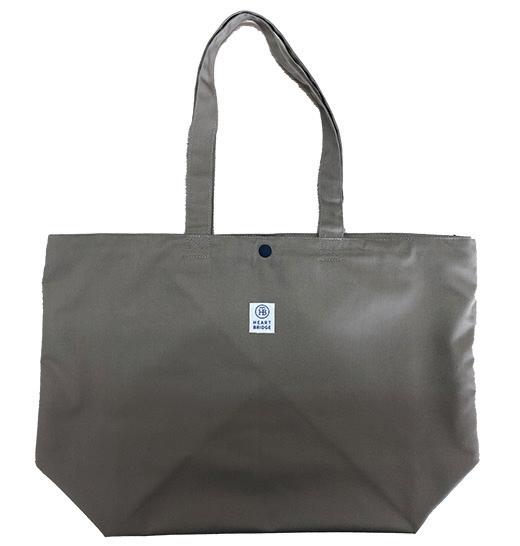





ETIQUETTE GUIDE: THE ART OF BUSINESS GIFT-GIVING
As you may have heard, business gift-giving is a big deal in Japan, and, when it comes to etiquette, there is no give and take. To avoid rifts when exchanging gifts, here’s what you need to know Guide: Yusuf Huysal and Marcus Webb
DO: Oseibo
Long before Santa Claus came to town, Japan had Oseibo—the traditional gift-giving season. Oseibo gifts are exchanged in December as expressions of gratitude to those who have helped you during the year both personally and professionally. Traditionally edible and drinkable gifts are given, so consider making your colleague or favorite client happy with a pack of fancy fruit, ornately wrapped cookies or a few fine bottles of sake.
DON’T: Skimp on wrapping
Though you may have been told otherwise, it’s not always what’s on the inside that counts. In Japanese gift-giving, the presentation of a gift is as important as its contents, if not more so. A great deal of care and effort (often by store clerks) goes towards wrapping the gift with pastel-colored papers or traditional furoshiki cloth and adorning it with ribbons. Bear in mind that combining black and red wrapping paper can convey a suggestive message, so it’s best avoided for business gifts.
DO: Stock up on choc
In the 1950s, Japanese confectionery companies began advertising heartshaped chocolates in the lead-up to Valentine’s Day. Somewhere along the way, however, a supposed translation error in one of the ads led to the assumption that only men are on the
receiving end and the chocs aren’t limited to your sweetheart. Hence, on February 14, Japanese women treat their male co-workers to giri-choco (obligation chocolate) in addition to
the honmei-choco (favorite chocolate) given to their loved ones. In the 1970s, the National Confectionery Industry Association milked the cow dry by establishing White Day, giving men the chance to reciprocate the gift to female colleagues a month later on March 14.
DON’T: Come back empty-handed
While often translated as ‘souvenirs’, omiyage gifts are not intended for you to keep to remind yourself of a business trip, but are instead brought back to co-workers who couldn’t join you on it. If you’re unsure about what to buy, go for regional delicacies and local products, and remember that kitsch is king. Those ‘I Love Hokkaido’ rice cakes will be a hit at the office.
DO: The big reveal
Japanese gift-giving is like a good magic trick: the reveal is the most important bit. Conjuring up an elaborately wrapped gift from its hiding place inside an inconspicuous konbini (standard convenience store) bag requires more sleight of hand than the old rabbit out of the top hat. When presenting the gift, do so with both hands accompanied by the phrase ‘tsumaranai mono desu ga’ (meaning ‘it’s not much’) and a cursory bow. Don’t be taken aback if your gift is refused as this is a show of politeness and may be repeated once or twice before eventual acceptance.
In Japanese gift-giving, the presentation of a gift is as important as its contents, if not more so





